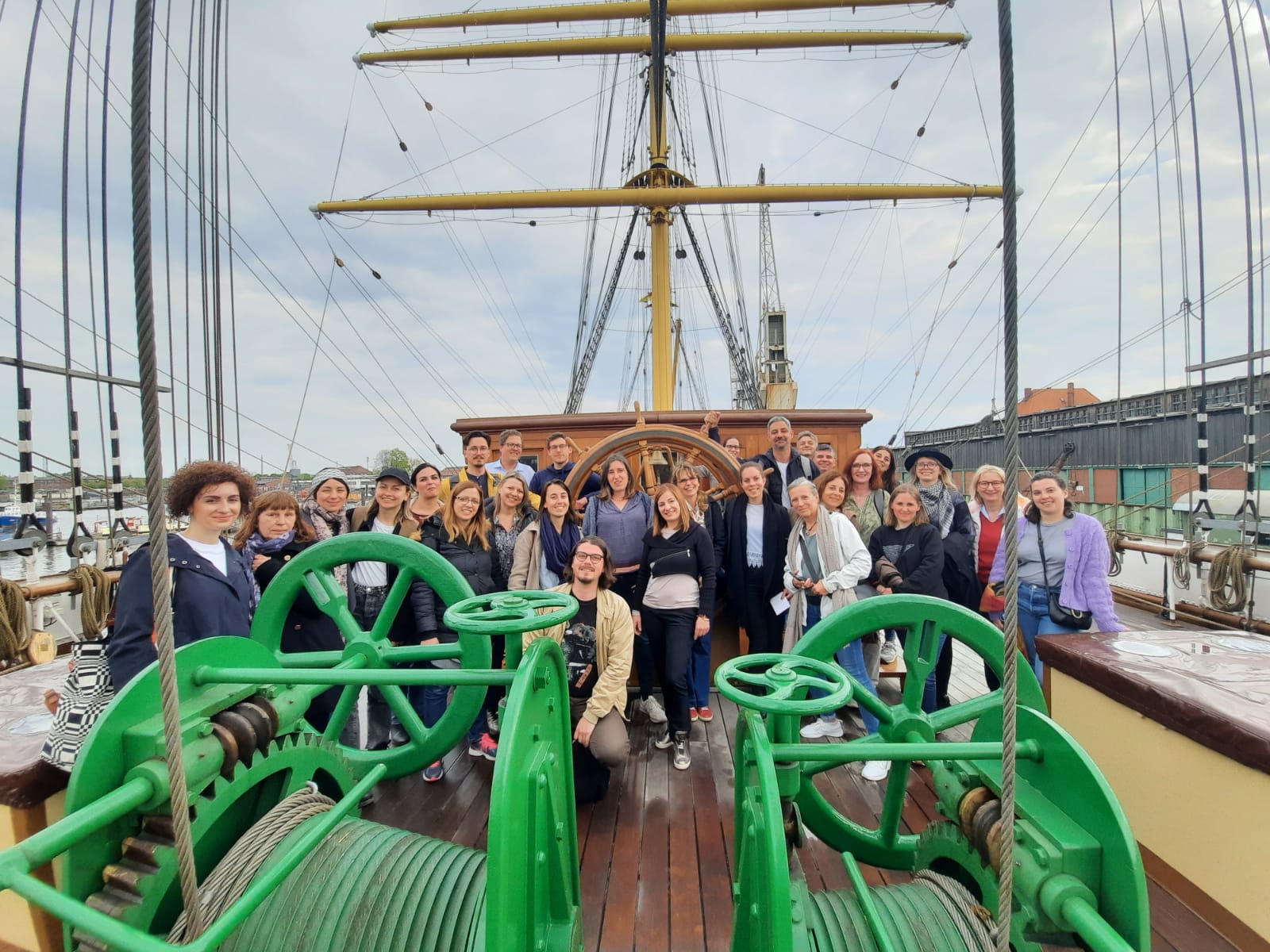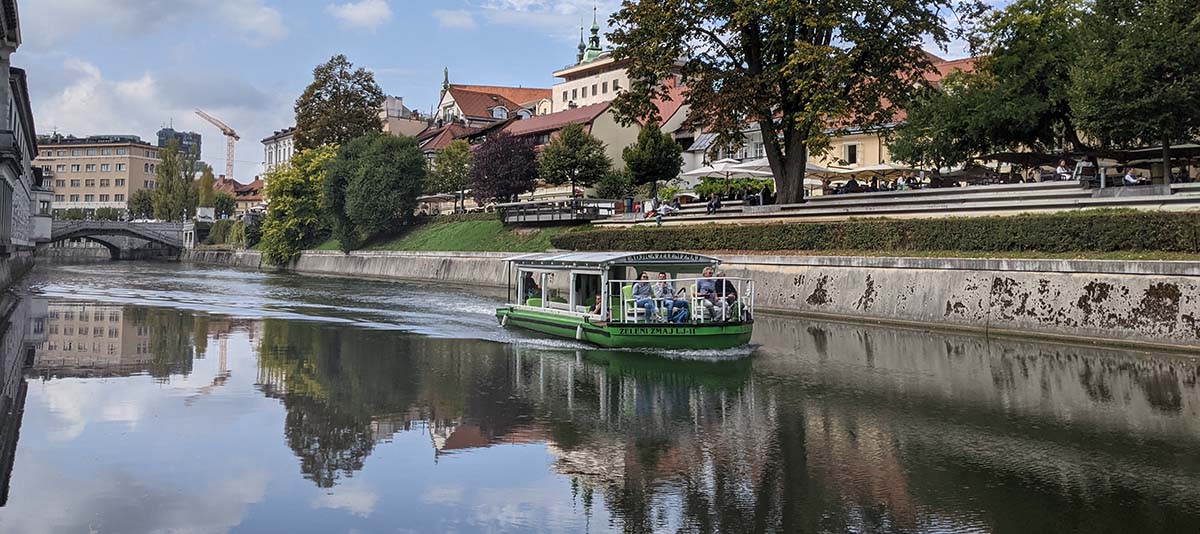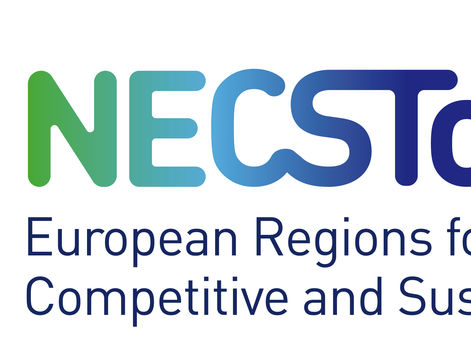
STAR Cities Final Conference in Kaunas
The STAR Cities Final Conference presented the synthesis and results of the project, including the best actions that have been carried out.
Many European territories have developed strong relations with a river, that both take an economic and social role in their history. In the heart of European cities or in suburban areas, riversides offer exceptional natural, cultural and industrial heritage, both tangible and intangible. As these destinations are regional capitals or near a capital, they combine a tourism offer specific to urban areas (architectural visits, cultural activities) with a more natural one with sports and leisure, in particular related to water as well as wellness. This natural environment has historically been protected or is today the purpose of new environmental policies.
That is why riverside development is a real opportunity for European cities to create innovative solutions for sustainable tourism development. Unfortunately, riversides are rarely identified as touristic spots and not sufficiently addressed by tourism policies. They globally suffer from a lack of consideration from Metropolitan authorities and tourism boards, but also from a lack of professional skills and tools for tourism actors. However, those spaces are at the crossroad of tourism challenges faced by European capitals such as the high concentration of tourism in city centres, the Cities “Museumification” phenomenon, the increased attention to sustainable development and the new trends of tourism practices (authenticity, slow tourism, etc).
European cooperation could help managing authorities in charge of Structural Funds, tourism strategies or urban development policies to better understand what needs to be changed and identify solutions by exchanging good practices. The STAR Cities project will involve the entire tourism ecosystem existing along rivers and, in this regard, is relevant to the Interreg Europe programme’s specific objective dealing with protecting, promoting and developing natural heritage, biodiversity and ecosystems.
Some of the STAR Cities partners are also members of the Riverside Cities European network, bringing together local regions wishing to develop or redevelop recreational activites along rivers or waterways in an urban environment. The network plans to apply for the "Culural Route of the Council of Europe" certification to ensure recognition of the role of rivers in the emergence and the development of popular leisure activites in Europe.

€1,264,010.00
Environment and resource efficiency
A thematic programme of seminars has been voted and will be the governing principle of the different meetings during the whole project.
| Date | Location | Theme(s) |
| September 2019 | Kaunas 2022 (Lithuania) | Locals & Communities engagement |
| October 2020 | Online seminar organized by the Free and Hanseatic City of Hamburg (Germany) | Tourism products & Marketing |
| February 2021 | Online seminar organized by the Val-de-Marne Tourism Board (France) | Governance & Coordination |
| April 2021 and October 2021 | Online seminar followed by a study visit tour organized by the Regional Development Agency of the Ljubljana Urban Region (Slovenia) (Slovenia) |
The Regional Tourism and Leisure Development Plan (RTLDP) determines the specific objectives and financial conditions for tourism development planning in Ile-de-France. In December 2016, the Ile-de-France Regional Council voted a series of objectives for the next RTLDP 2017-2021 and among others:
- Strengthen and diversify the tourism offer within the whole region
- Enhance and develop the leisure offer to the regional public
The STAR Cities project shares these objectives but river tourism is not identified as a specific potential to be developed and the Regional Tourism Fund, made for the policy implementation, is rarely used to support projects related to river tourism. River tourism is a real cross-cutting theme for regional tourism development that should be supported by a specific strategy. Along its 700km of waterways, the Region offers cultural tourism, heritage, gastronomy, nature and sports, etc. Administrative limits are crossed by rivers and the Region would be the proper scale for tourism development by developing territorial projects and by involving local and departmental public authorities.
Axis 3 Competitiveness aims to support competitive repositioning of territorial entrepreneurial systems through the provision of useful tools to enable local stakeholders and businesses to identify the best opportunities to boost growth and innovation of target sectors (industry, crafts, tourism and commerce).
The specific objective 3.3 is dedicated to “Consolidation, modernisation and diversification of territorial production systems” and tourism has been identified as the main strengths of Lazio economy for this purpose. Indeed, tourism is considered as an opportunity for both direct and indirect economic growth as it will lead to maintenance of employment levels but also improvement of territory attractiveness, increasing of tourism flows, sustainable development in a social and cultural way, enhancement of cultural and environmental assets, etc. As for STAR Cities issues, diversification is thought in terms of resources (Lazio Region focus on historical-cultural assets but could develop traditions and nature ones) and in geographical terms (tourism is an opportunity to develop peripheral parts for a proper management of tourism flows).
However, this specific objective should be improved as it does not sufficiently address natural heritage potential of Lazio Region tourism development. In particular by targeting riverside tourism as an emerging sector for job creation, development of peripheral areas of Rome Metropolis, and raise awareness on environmental issues.
The main aim of this OP is to bring back rapid and sustainable growth after the recent financial and economic crisis and reduce the gap between the country’s level of development and the EU average. STAR Cities will address the specific objective 5.4 Enhance relevance, number of visits and visibility of cultural and natural heritage, including public awareness on the surrounding environment.
The implementation of this objective is expected to result in:
- Increasing awareness of Lithuanian society on the distinctiveness and significance of Lithuania’s cultural and natural heritage
- Turning natural, cultural and recreational sites into centres of social, educational and economic activities
- Improving image of Lithuania as an attractive tourist destination in foreign markets
By providing more accessibility to natural and cultural sites, more information, better infrastructures and effective marketing actions, this specific objective aims to increase attractiveness of natural and cultural heritage for both Lithuanian people and foreign tourists. But it should be improved in several points:
- the Lithuanian society should be counted as part of the culture and tourism attractiveness, with an active role, instead of a passive role of visitor
- river tourism is not identified whereas it would be a perfect link between local people, tourists and both natural and cultural heritage
- international events, as ECOC, are not identified as key tools to increase the country image
The Regional Operational Programme of Romania for 2014-2020 intends to answer the major changes brought by the transition to the market economy in Romanian cities. Less industrial activities and reduced investment of local authorities combined to uncontrolled urban expansion, lead to the decay of some urban areas, especially cultural and historical ones.
The Ministry of Tourism chose to focus on the axis 5 Improvement of urban environment and conservation, protection and sustainable exploitation of cultural heritage. The objective is to protect and promote the local cultural identity and foster economic growth and life quality improvement through its sustainable exploitation, the revitalisation of urban areas and an improved management of cultural resources. Although STAR Cities addresses similar objectives, it focuses on river tourism and natural heritage which are axis absent from the policy instrument and from most of urban revitalisation plans.
This will not only influence the EU regional development policy but also the national legal framework at the national level with the new Tourism Law to be voted and participate to make the most of river tourism potential.
Finally, the project will help to influence the axis 7 of the ROP which is complementary as it addressed the diversification of the of local economies through the sustainable development of tourism by adding a specialisation and a concentration of the effort on this particular promising part of tourism sector.
The City of Hamburg released its statement as a strategic decision binding for all related offices and ministries. It describes the aims of Hamburg’s tourist policy and the means to be taken in order to achieve the named targets. Contents: readiness and support for “city-Tourism” (i.e. Musicals, heritage), upgrading of inner city transportation services, use of regional funds for raising the attractiveness of the city, guiding systems, port facilities (for cruise tourism), airport – city-connection improvement, expansion of “city-card-model” to more locations like museums, theatres etc.
This policy instrument should be improve because it is exclusively focused on the inner city attractions and does not include tourism development at Metropolitan scale as well as the involvement of local people in order to ensure their well-being together with tourists. Elbe river tourism development, through STAR Cities project, will participate in filling the gap as it is predictable that the inner city will reach its capacity limits.
Furthermore, the extended regional approach will create new targets, foster the outlying districts of Hamburg as well as the Metropolitan Region and include them into a coherent strategy of sustainable development and protection. This extended strategy, including peripheral parts along the river Elbe, will bring an improved global and consistent strategy instead of the actual parallel existence of several, partly competing and inefficient approaches.

The STAR Cities Final Conference presented the synthesis and results of the project, including the best actions that have been carried out.

Good practices study visits in Hamburg and presentation of Action Plans implementation progress.

Results and future of partners cooperation in the STAR Cities project were presented during a virtual conference in November 2021.

Every STAR Cities Good practices compiled into a guide

Presentation of STAR Cities good practices on Locals & Communities

Presentation of STAR Cities good practices on Products & Marketing

Presentation of STAR Cities good practices on Governance & Cooperation

Presentation of STAR Cities good practices on Environment & Sustainability

STAR Cities study visits tour in Ljubljana, Slovenia, in October 2021

Presentation of STAR Cities' advisory partner NECSTouR